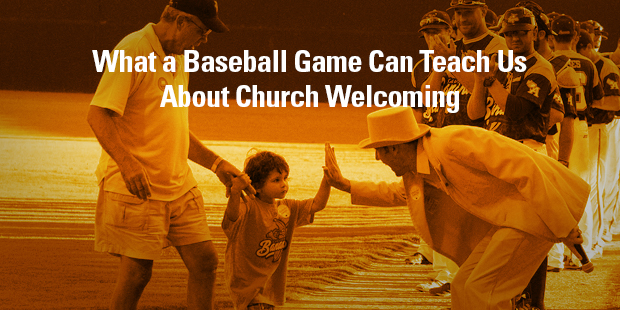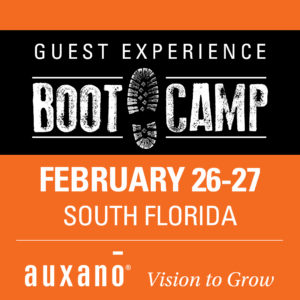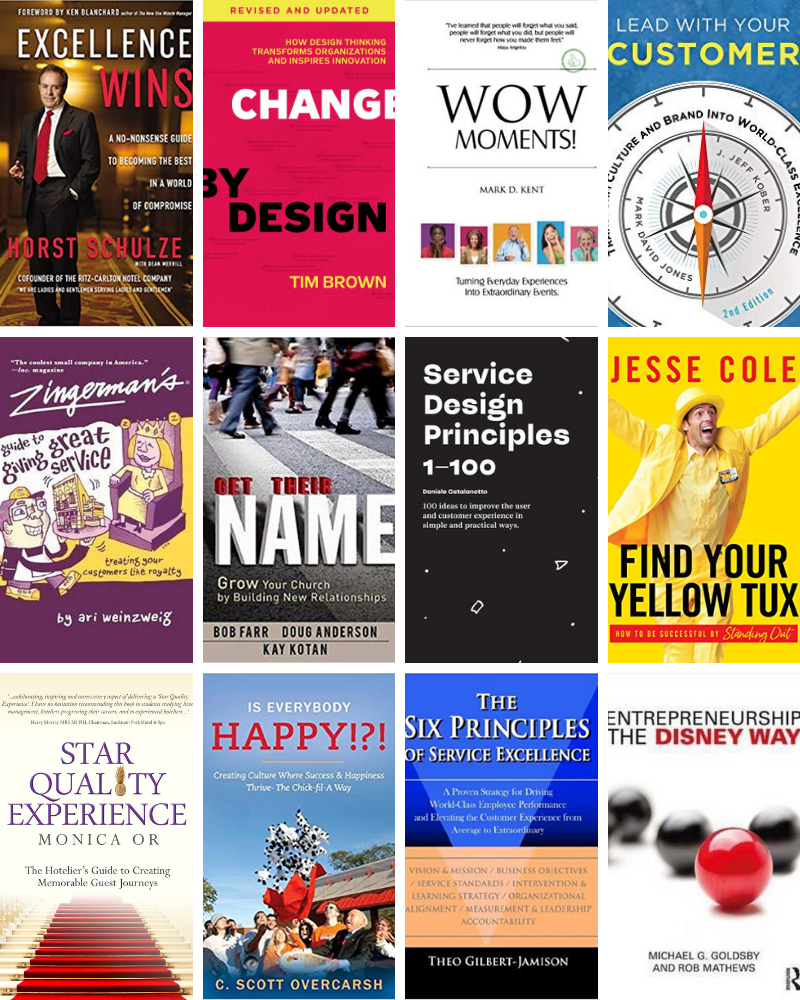Editors Note: During our August focus on Guest Experiences, we are honored to have some of the best voices in the world of Customer Experience provide guest posts for the Vision Room. As you read the content below, simply think “Guest” in terms of the “customer” the author is talking about – and you will benefit from the knowledge and expertise of these great minds.
If you want to move beyond cosmetic changes and lip service to real changes in both the employee experience and the customer experience, the first thing you have to look at is your company’s culture.
What is culture? My favorite definition is Herb Kelleher’s: “Culture is what people do when no one is looking.” To add a little more detail to that, culture = values + behavior.
While customer experience strategies must include a priority focus on the employee experience, they often don’t. Many companies believe they can improve the customer experience without improving the employee experience. I’ve heard it many times over the last 25+ years.
At the root of what both employees and customers experience is a company culture that focuses on both of their needs – and puts them before profits or shareholder value. Does your company have a people-centric culture, or is it profit-centric and profit-driven? Companies must make money, but there’s a better way of doing it that benefits all constituencies involved.
How do you design a people-centric culture? It’s definitely a culture shift (obviously), a mindset shift, and a behavior shift for most companies!
Unfortunately, in most organizations, the culture looks like the pyramid in this image below, where mission, vision, and values might frame the foundation for the culture, but revenue and profits take priority over employees and customers – and drive everything that’s being done in the organization. These companies live by the old management philosophy that they’re in business to maximize shareholder value.
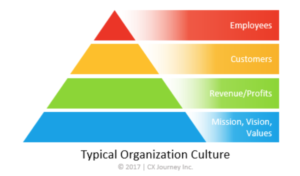
Contrast that with a people-centric culture (image below), where, without a shadow of a doubt, the company foundation is its mission, vision, values, and purpose. These companies have a strong culture and use these foundational elements day in and day out to operate the business. Once the company is grounded in well-defined and clearly-communicated mission, vision, values, and purpose, they’ve got a solid basis for a people-focused and people-centric culture.
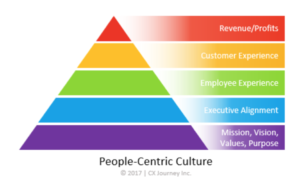
Next, you’ll see that I’ve reordered the layers of the typical organization culture pyramid and have added a new layer that is all about the executives and executive alignment. If your executive team is not aligned with the business goals and outcomes, both internal and external, then neither is the rest of the organization. In the same vein, if executives don’t embrace both servant leadership and truly human leadership, then it will be difficult to foster that people-centric culture.
The next layer in the pyramid is your employees, who will benefit from a company built on solid mission, vision, values, and purpose – all of which become not only the basis for hiring, firing, and promoting but also the basis for executive behavior and decision making. And they benefit from an executive team that is aligned and working together.
As you know, employees must come more first. The employee experience drives the customer experience. When you’ve got happy, engaged, satisfied, and empowered employees, customers benefit in their experience. And so, the customer experience is the next layer of the pyramid.
And when you focus on the people – employees and customers – first, then the numbers – revenue/profits – will come.
Putting employees and customers before revenue and profits means that your executives are making decisions with their employees and customers in mind at all times. They are doing what’s best for employees, and ultimately, for customers, so that, in the end, the business benefits.
If there’s any doubt that that is possible, check out this TED2019 Talk from Hamdi Ulukaya, CEO of Chobani. It contains a lot of powerful messages!

You watched the whole thing, right?
I could just stop there, but I’ll wrap up with a few thoughts.
While creating and maximizing shareholder value is important to any public company, it is an outcome, not a means. There are means to achieving that outcome, and they include putting employees and customers first, ahead of profits. Companies succeed if and when…
- employees want to work for them
- customers want – and actually do – buy their products
- vendors and suppliers want to partner with them
- people want them to locate in – and be a part of – their communities, and
- shareholders buy their stocks.
Companies have more constituents than shareholders and more responsibilities than delivering value to just shareholders. The rest of their constituents must receive value, as well. So, put employees first, then customers, and watch the business thrive.
To hear more about my thoughts on this topic and how to create this people-focused culture, be sure to watch my webinar with CallidusCloud titled, Be a CX Winner by Focusing on Culture and Employee Experience.
Always put people first, for without them, there is no organization. -David Sikhosana, Time Value of Money: Timing Income
> Read more from Annette.
Want to know more about Guest Experiences at your church? Let’s talk! Connect with an Auxano Navigator here.

Tags: Annette Franz, Guest Experience, People
|
What is MyVisionRoom? > | Back to Execution >
